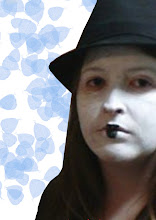David (Jaiwei) Duan–Model/Laser cut group - http://davidduan.wordpress.com/
What is it?
A sorting machine for ideas represented on paper. More of a system than a machine, in which either flat pieces of paper or scrunched up paper are randomly sorted by a fixed arrangement of maze like pathways. In his own words his design acts like a sieve for ideas. Ideas enter by being dropped into the top and come out sorted into different piles at the bottom. The idea operates on a large scale, with a height that covers a floor and being able to take paper up to an A1 size. The design is integrated into the studio, done so by attaching to the wall and spanning the space between level 2 and 3.
How did he use relevant technologies?
There was an obvious use of the laser cutter in the production of his final design and appears to be some use in the mock up stages. The laser cutter has been used in the conventional way but has produced a convincing and precise result.
How is the design informed by the literature?
There is a direct link to the paper piles/collections found in the literature. David’s concept was to automate autonomies and randomise the process of organisation seen in the literature. This has been done effectively and been adapted to suit the ‘trash’ produced in studio
Critique
David’s idea, while simple is beautifully effective. His presentation in which a miniature version was operational with only a minor hitch which was due to the scale it was presented at rather than a specific design flaw. I like the way this design results in communal regeneration of ideas and encourages students to regenerate ideas rather than throw them out or store permanently in their lockers without another thought. It was designed with the architecture studio at the University of Auckland being specifically in mind which has created a unique form reference to his design. This relevance to the building is seen through the use of the 45o angle consistently present in the building’s design and in David’s system, showing he has an understanding of the building that he is designing for. The idea of movement in David’s design, seen as like the studio structure the design structure is exposed, is particularly strong and dynamic which is a unique feature as many designs result mostly in the static storage of designs. Possible critiques could be that this system does not allow for the regeneration of models (unless photographed) and in his A3 pictures it looks as if the system is inconveniently located directly in front of a studio window. Presentation could further be improved by taking photographs without the interference of plastic bags e.t.c.
Overall I think David’s design works well, fully engaging with the text’s concepts and offering a working, plausible solution to the design brief.
Friday, August 13, 2010
Subscribe to:
Post Comments (Atom)

No comments:
Post a Comment